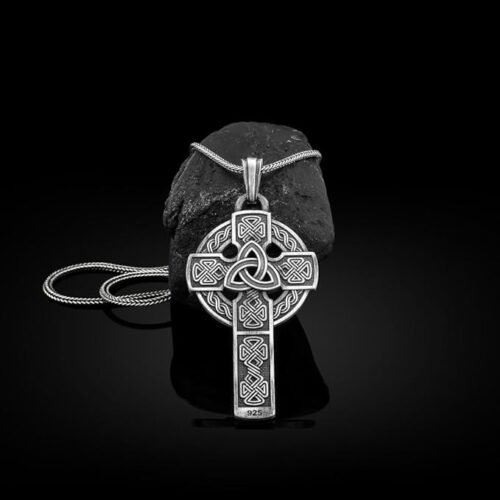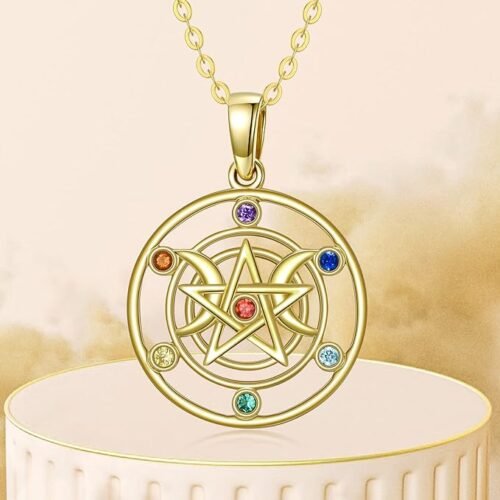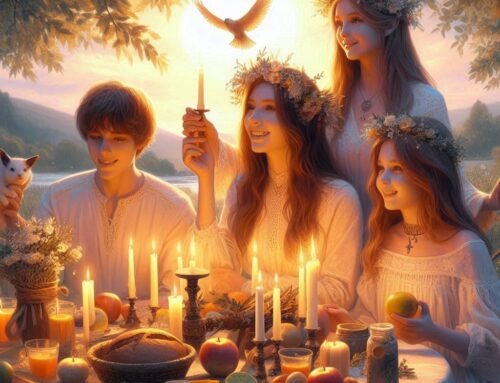
Modern Wiccans celebrate Litha
Exploring Litha: A study of the Wiccan Summer Solstice Celebration
Abstract
This paper delves into the Wiccan Sabbat known as Litha, celebrated during the Summer Solstice, offering insights into its cultural significance, rituals, and historical roots. Drawing upon anthropological methodologies, it examines the themes, practices, and symbolism associated with Litha, shedding light on its evolution from ancient pagan traditions to contemporary Wiccan practices. By exploring the intersection of nature worship, seasonal rhythms, and spiritual beliefs, this study contributes to a deeper understanding of Wiccan cosmology and the broader phenomenon of modern pagan religiosity.
Introduction
Litha, also known as the Summer Solstice, holds a central place in the Wiccan calendar, embodying themes of abundance, growth, and masculine energy. This paper explores Litha from an anthropological perspective, examining its cultural significance within the context of Wiccan spirituality. Through an analysis of historical sources, ethnographic accounts, and contemporary practices, it seeks to elucidate the multifaceted nature of this Sabbat and its enduring relevance in modern pagan traditions.

Litha – Summer Solstice
Historical Context of Litha
The celebration of the Summer Solstice dates back to ancient pagan cultures, where it was marked by rituals honoring the sun’s peak power and the abundance of the natural world. In ancient Egypt, the Summer Solstice was linked with the rise of the Nile River, a symbol of fertility and renewal. The ancient Greeks celebrated the Kronia, a festival honoring the god Cronus, which included feasting and the temporary suspension of social hierarchies, symbolizing a return to a Golden Age.
In Northern Europe, the Celts and Germanic tribes held elaborate Solstice celebrations. The Celts celebrated Alban Hefin, marking the lightest day of the year with bonfires, feasting, and rituals to ensure bountiful harvests. Similarly, the Norse celebrated Midsummer with Blót, offering sacrifices to honour the gods and ensure the fertility of the land. The importance of the Solstice in these ancient cultures is highlighted by the construction of monumental structures such as Stonehenge, aligned with the sunrise on the Summer Solstice, reflecting its significance in their cosmology and social life.
As Christianity spread through Europe, many pagan Solstice traditions were absorbed and reinterpreted within a Christian context. The Feast of St. John the Baptist, celebrated on June 24th, incorporated many elements of the traditional Midsummer festivals, including bonfires and feasting, ensuring the survival of these ancient customs through the Middle Ages.
Ritual Practices
Contemporary Litha celebrations often involve rituals conducted outdoors, where participants connect with nature and harness the energy of the sun. Altars adorned with seasonal flowers, herbs, and fruits serve as focal points for worship and offerings to the gods and goddesses of Wiccan cosmology. Rituals of re-dedication to the divine masculine and feminine, as well as divination related to love and romance, are common during Litha.
One prominent ritual practice during Litha is the lighting of bonfires or candles to honour the sun’s power and to symbolize the height of solar energy. According to Wiccan tradition, jumping over the Litha bonfire can bring good luck and health, reminiscent of ancient customs. The consumption of fresh produce, such as strawberries, honey, and other fruits of the season, symbolizes the warmth and abundance of the summer months. Outdoor feasts provide opportunities for communal celebration and fellowship, fostering a sense of community and shared purpose.
A common element in Litha rituals is the weaving of flower crowns and garlands. These floral decorations, often made with herbs like St. John’s Wort, vervain, and mugwort, are believed to possess protective properties and are worn during ceremonies to enhance connection with nature. Ritual bathing, another Litha tradition, involves bathing in rivers, lakes, or the sea to cleanse and purify oneself, echoing ancient practices of water worship and renewal.

The Bounty of Litha
Symbolism and Meaning
The name “Litha,” derived from an old Anglo-Saxon term for the month of June, reflects the historical and cultural roots of the Summer Solstice celebration. It symbolizes the midpoint of the warmer months in the Northern Hemisphere, marking a time of peak energy and vitality in the natural world. The symbolism of fire, representing the sun’s power and the divine masculine, is prominent during Litha rituals, as participants seek to harness its transformative energy for personal growth and empowerment.
The sun at its zenith symbolizes the height of power and life force, while the subsequent waning of daylight hours after the Solstice represents the cyclical nature of life and the inevitable decline that follows growth. This duality is a central theme in Wiccan cosmology, emphasizing the balance and harmony inherent in natural cycles.
In addition to fire, other symbols associated with Litha include the oak tree and the Holly King. In Wiccan mythology, the Oak King, representing the waxing year, battles the Holly King, who represents the waning year, during the Summer Solstice. The victory of the Oak King signifies the triumph of light over darkness, but his reign is short-lived as the days begin to shorten, symbolizing the transitory nature of power and life.
Conclusion
In conclusion, Litha represents a convergence of ancient pagan traditions, contemporary Wiccan practices, and the seasonal rhythms of the natural world. Through its rituals, symbols, and themes, it serves as a reminder of humanity’s connection to the earth and the cycles of life, death, and rebirth. By exploring Litha from an anthropological perspective, this study seeks to deepen our understanding of Wiccan spirituality and the diverse expressions of modern pagan religiosity.
The enduring relevance of Litha in modern Wiccan practices underscores the human desire to find meaning and connection through the natural world. As noted by Ronald Hutton in The Stations of the Sun: A History of the Ritual Year in Britain, the celebration of the Summer Solstice taps into a profound spiritual awareness that transcends cultural and temporal boundaries. Through the lens of anthropology, we gain a richer appreciation of how ancient traditions continue to shape contemporary spiritual practices, reflecting the timeless human quest for harmony with the cycles of nature.
References
- Hutton, Ronald. The Stations of the Sun: A History of the Ritual Year in Britain. Oxford University Press, 1996.














